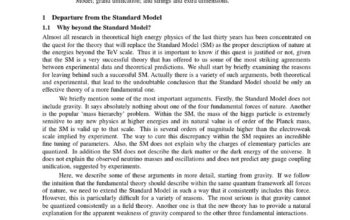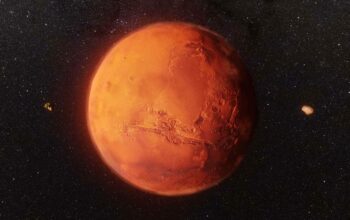The pursuit of knowledge in astronomical sciences has exponentially accelerated in the contemporary era, giving rise to an exuberant interest in extrasolar planets—or exoplanets—as they become pivotal in our quest for understanding the universe. A seemingly minute step in technological advancements can culminate in prodigious leaps in scientific discourse, particularly in the niche of exoplanetary science. Innovations in observational methodologies and instruments have vastly enhanced our capacity to detect and characterize planets orbiting stars beyond our solar system. As these strides progress, they prompt a profound shift in our epistemological frameworks, piquing the curiosity of researchers and the public alike.
Exoplanets are defined as celestial bodies that orbit stars outside our solar system, and recent missions have unveiled a wealth of information about their diversity, atmospheric compositions, and potential habitability. The discovery of over five thousand confirmed exoplanets has rendered an expansive tapestry of planetary systems to explore. These new arrivals challenge conventional paradigms and invigorate scientific communities, offering tantalizing glimpses into the mechanisms of planetary formation and evolutionary trajectories within multitudes of environments. Modern advances have transcended mere discovery; the intricate characterization of exoplanets now illuminates the complexities of their atmospheres and geophysical attributes.
The methodologies employed in the study of exoplanets have evolved significantly, particularly with the advent of space-based telescopes such as Kepler and TESS (Transiting Exoplanet Survey Satellite). The transit method, which relies on detecting the slight dimming of a star’s light caused by a passing planet, has emerged as a cornerstone technique in exoplanet detection. This method not only identifies the presence of exoplanets but also allows for the inference of orbital sizes and relative separations, laying the groundwork for further inquiry into their atmospheric properties.
Moreover, radial velocity methods, utilizing the Doppler effect to measure the gravitational influence of an orbiting exoplanet on its parent star, have enriched the arsenal of techniques available to astronomers. By analyzing changes in the star’s spectrum, scientists glean insights into the mass and orbital parameters of exoplanets. Such sophisticated multi-faceted approaches have considerably enhanced our collective understanding of planetary systems, compelling us to reconsider our position within the cosmos.
Contemplating the atmospheres of exoplanets propels this discourse into realms of immense curiosity. The idea that some of these distant worlds harbor conditions conducive to life or even extraterrestrial organisms compels humanity to interrogate its own existence. Missions like the James Webb Space Telescope (JWST) are on the precipice of characterizing the atmospheres of terrestrial-sized exoplanets in unprecedented detail, potentially identifying biomarkers such as water vapor, carbon dioxide, or even signs of life itself. These endeavors spearhead a radical transformation in our scientific inquiries, imbuing our understanding of biology with a cosmic dimension.
As the scientific community delves deeper into the exploration of exoplanets, questions pertinent to their origins and evolution have proliferated. Investigating how these planets form and subsequently evolve within diverse galactic environments unveils the myriad factors influencing their developmental pathways. Indeed, the field of astrophysics is gradually converging with planetary sciences, leading to integrative research that marries astronomical observations with geological and biological insights.
Furthermore, the implications of exoplanetary studies extend beyond the mere identification of celestial bodies. The principles governing planetary atmospherics are crucial in comprehending climate systems and geophysical processes both on Earth and its distant counterparts. For instance, studying the variety of atmospheric compositions among exoplanets presents opportunities to extrapolate the evolutionary dynamics that shape climate change, elucidating both catastrophic and benign scenarios for planetary habitability.
In tandem with scientific inquiries, the burgeoning interest surrounding exoplanets has further catalyzed public engagement with astronomy. Social media platforms abound with discussions surrounding these celestial bodies, igniting conversations that breach the walls of traditional academia. Public outreach programs, alongside popular media representations, have conspired to elevate the status of exoplanets in the collective consciousness, transforming them into icons of human curiosity and exploration. This phenomenon nurtures a new generation of potential astronomers and scientists, fostering an atmosphere where curiosity is nurtured and questions soar.
Nonetheless, as we advance into an epoch defined by profound discovery, we must remain acutely aware of the ethical implications and responsibilities bestowed upon those venturing into this realm. The hunt for exoplanets transcends mere exploration; it invokes a philosophical contemplation surrounding the interconnectedness of life and the universe itself. Awareness of the ramifications of interstellar discovery is paramount in ensuring that the quest for knowledge proceeds with integrity, foresight, and respect for both ethereal and terrestrial ecosystems.
In conclusion, the exploration of extrasolar planets, invigorated by modern technological advancements, heralds a landscape of scientific inquiry poised to fundamentally reshape our understanding of celestial mechanics and biological existence. What may initially seem a trivial stride in astronomy represents an expansive horizon of possibilities, an intrinsic shifting of perspectives that elicits profound curiosity. As scientists wrestle with complex questions of life, planetary dynamics, and the very architecture of the universe, humanity stands poised on the cusp of a colossal leap into the unknown—a reflection of our enduring desire to comprehend our place in the cosmos. The journey is as vital as its destination, one rich with discoveries yet to be unearthed, and answers yet to be found.












